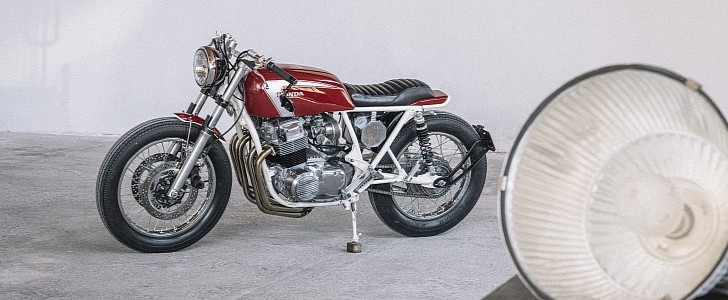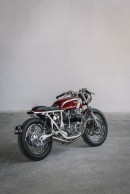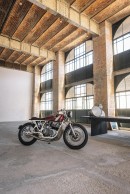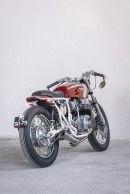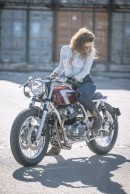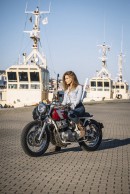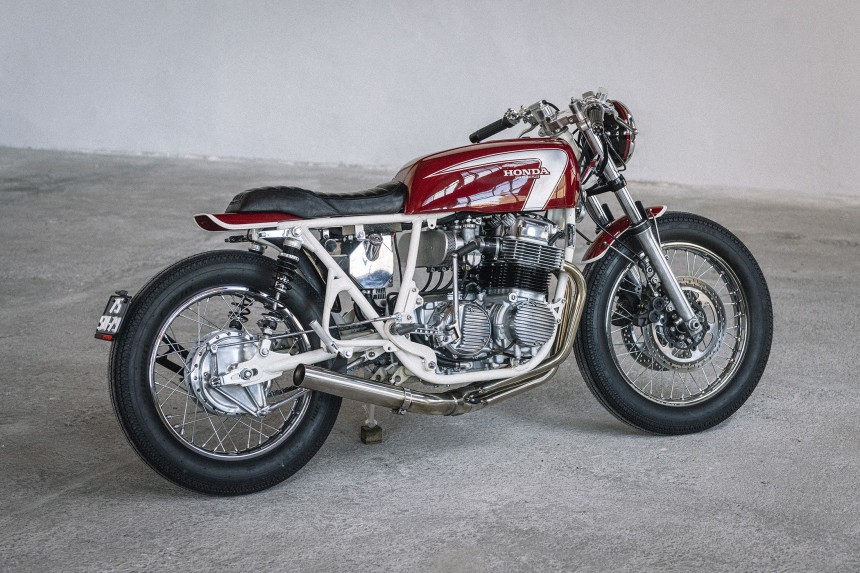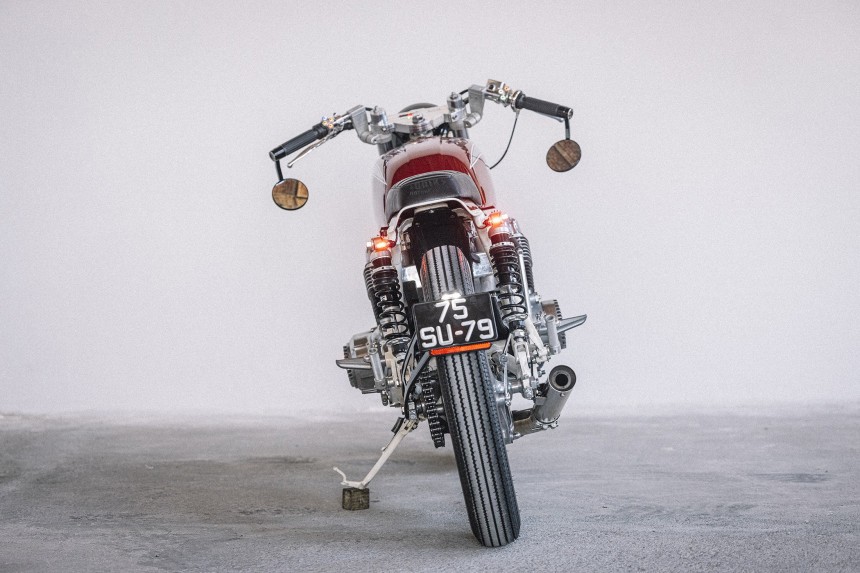No matter how often we talk about Honda’s groundbreaking icon, we can’t seem to grow tired of it in any way, shape, or form.
In an age when phrases like “no replacement for displacement” and “bigger is better” were the norm, Soichiro Honda knew it was time to raise the bar. As of 1965, the House of Tokyo attempted to join the big league with the CB450, but it failed to garner any serious attention on the U.S. market. Having been acquainted with larger English bikes and Harleys for quite some time, Americans simply weren’t that interested in a 444cc machine from the other side of the Pacific.
Thus, the Japanese manufacturer went back to the drawing board in 1968, when Yoshiro Harada had been tasked with spearheading the development of a new four-cylinder phenom – the legendary CB750. Upon its release in 1969, Honda’s marvel didn’t just offer an abundance of desirable creature comforts (e.g., an electric starter), but it was also the first production motorcycle to sport a little innovation called disc brakes.
Despite being way ahead of its time, this bad boy was retailed for about half the price of its competitors, and it doesn’t take a businessman to understand why this recipe was bound for success. With its unmatched characteristics, the CB750 went on to enkindle the revolutionary UJM (Universal Japanese Motorcycle) movement, followed by the likes of Suzuki, Kawasaki, and Yamaha.
Initially, Honda forecasted a production run of about 1,500 copies per year, but the market demand turned out to be much higher than anyone had expected. At the peak of CB750’s reign, the company was assembling nearly twice as many units on a monthly basis, with the total sales topping out at over 400,000 by 1978. Sure enough, the world will never forget how crucial Yoshiro Harada’s contribution has been to the global motorcycling industry!
Today, first-gen CB750s are among the most seductive classics on the second-hand market, and it's not uncommon to see them being transformed into pristine restomods or full-blown custom showstoppers. Speaking of modified four-bangers, let’s see how the moto experts over at Lisbon’s Unik Motorcycles went about breathing new life into a neglected ‘78 MY specimen.
As the donor’s air-cooled 736cc inline-four powerplant was in dire need of some love, Unik kicked things off by treating it to a rejuvenating makeover. During the refurbishment, the engine received a premium intake kit from Dynojet and a state-of-the-art air filter, which is accompanied by a unique four-into-one exhaust on the opposite end of the combustion cycle.
Next, the crew outsourced a Yamaha XJR1300’s higher-spec telescopic forks, along with its dual 298 mm (11.7 inches) front brake discs. As we glance rearward, we find a modern pair of YSS shock absorbers supporting the predator’s revised subframe, on top of which you’ll spot a charming leather saddle that’s been upholstered in-house.
After they’ve obtained a set of overhauled wheel hubs, the Portuguese craftsmen proceeded to install fresh spokes and D.I.D rims, as well as retro-style Shinko tires. In the cockpit, we’re greeted by a custom top clamp with integrated warning lights and a juicy selection of aftermarket accessories, such as Tarozzi clip-ons, bar-end mirrors and Rebel Moto switches. The stock levers have also been replaced with youthful substitutes, while Motogadget is responsible for supplying those stealthy grips and a tiny digital speedometer.
The CB750 comes equipped with a new headlamp up front and dual-function LED taillights from Highsider at the rear in terms of lighting. In addition, the Unik pros fabricated bespoke fenders and a discrete license plate holder to keep things looking clutter-free for the finishing touches. Finally, the entire structure was enveloped in a graceful two-tone color scheme from head to toe.To give this entity a distinct personality of its own, Lisbon’s specialists nicknamed it “Imperatrix.”
Thus, the Japanese manufacturer went back to the drawing board in 1968, when Yoshiro Harada had been tasked with spearheading the development of a new four-cylinder phenom – the legendary CB750. Upon its release in 1969, Honda’s marvel didn’t just offer an abundance of desirable creature comforts (e.g., an electric starter), but it was also the first production motorcycle to sport a little innovation called disc brakes.
Despite being way ahead of its time, this bad boy was retailed for about half the price of its competitors, and it doesn’t take a businessman to understand why this recipe was bound for success. With its unmatched characteristics, the CB750 went on to enkindle the revolutionary UJM (Universal Japanese Motorcycle) movement, followed by the likes of Suzuki, Kawasaki, and Yamaha.
Today, first-gen CB750s are among the most seductive classics on the second-hand market, and it's not uncommon to see them being transformed into pristine restomods or full-blown custom showstoppers. Speaking of modified four-bangers, let’s see how the moto experts over at Lisbon’s Unik Motorcycles went about breathing new life into a neglected ‘78 MY specimen.
As the donor’s air-cooled 736cc inline-four powerplant was in dire need of some love, Unik kicked things off by treating it to a rejuvenating makeover. During the refurbishment, the engine received a premium intake kit from Dynojet and a state-of-the-art air filter, which is accompanied by a unique four-into-one exhaust on the opposite end of the combustion cycle.
After they’ve obtained a set of overhauled wheel hubs, the Portuguese craftsmen proceeded to install fresh spokes and D.I.D rims, as well as retro-style Shinko tires. In the cockpit, we’re greeted by a custom top clamp with integrated warning lights and a juicy selection of aftermarket accessories, such as Tarozzi clip-ons, bar-end mirrors and Rebel Moto switches. The stock levers have also been replaced with youthful substitutes, while Motogadget is responsible for supplying those stealthy grips and a tiny digital speedometer.
The CB750 comes equipped with a new headlamp up front and dual-function LED taillights from Highsider at the rear in terms of lighting. In addition, the Unik pros fabricated bespoke fenders and a discrete license plate holder to keep things looking clutter-free for the finishing touches. Finally, the entire structure was enveloped in a graceful two-tone color scheme from head to toe.To give this entity a distinct personality of its own, Lisbon’s specialists nicknamed it “Imperatrix.”
